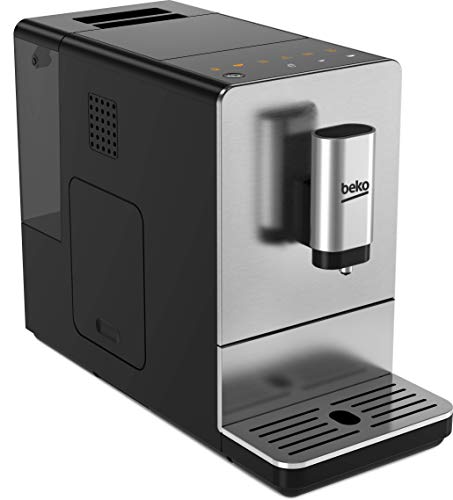Bean to Cup Machines
If you are looking for silky, creamy cappuccinos or rich espresso, a beans-to-cup machine will deliver a barista-style beverage. This is especially true for those machines that have a milk carafe, which automatically dispensing perfectly texturized and frosty milk to finish your coffee.
However, there are other things to take into consideration before you decide to buy one.
Quality
Quality is crucial based on what you are looking for in your coffee. There's a growing group of coffee lovers who place the quality of their espresso over other aspects of their beverage, and thankfully, there are now several good bean to cup machines that can offer.
Most bean-to-cup machines can produce cappuccino and latte as well in flat whites, cortados, and standard black coffees, such as americano and filter. A good machine should have adjustable grind settings that allows you to alter the intensity of flavour and also the milk steam wand, when you're a fan creamy classics like cappuccinos or lattes.
While some bean to cups machines are fully automated, as far as the espresso is concerned, the vast majority require some manual work by the user to create milk-based drinks. This is usually an issue with the top mid-range or high-end machines although there are a few which can make milky drinks at the press of a single button.
The Sage Oracle & Oracle Touch are, for instance, among the top bean-to-cup machines in terms of shot quality. However, they aren't able to compete with the results an espresso machine at home when operated by a professional barista, can produce. The Gaggia Navigation is a reasonable option that will still yield great coffee. It also has the added benefit being the most simple machine to clean I've tested.
Convenience
A bean-to-cup machine grinds and extracts the coffee beans in the order that is required. This helps to improve taste because the longer ground coffee is left to sit, the more it oxidizes.
It is important to grind coffee beans when you are ready to make espresso or hot chocolate. The top bean to cup machines also come with the ability to stop you from making a whole batch of brews until you've removed the grinder's internal bin.

Bean to cup machines waste only a tiny amount of water, unlike traditional espresso machines, which often waste water by pushing too much through the portafilter, and then overflowing the chamber. They use a thermoblock that heats only the water they require instead of pouring it on the grounds.
If you're looking to experience an entire espresso experience such as cappuccino, latte, or cappuccino from your automatic coffee maker, look for models with an integrated milk system. This system heats and texturize milk until it is at the desired consistency, then dispensing into the drink. Some of the more bespoke models allow you to alter the temperature, texture and foam degree of your drinks.
Versatility
A bean-to-cup coffee maker is a good choice for companies who want to offer their clients and staff with high-quality coffee drinks at the click of the button. These machines, as the name suggests, grind and brew coffee directly into the cup. You can make espresso, flat white, cappuccino or a long black at the touch of a button. These machines also have an milk frother to create a creamy, texturized drink for those who like it.
This versatility makes bean to cup machines a very popular choice for companies such as offices, car dealerships, and beauty salons that have to accommodate a variety of tastes. Bean to cup coffee machines can be mastered to operate by anyone, in contrast to traditional espresso machines in commercial settings that require a barista for operation. This ease of operation negates the need for training and helps save money on staff wages.
Furthermore the beans are ground immediately before making a drink, making them fresh and flavorful. The flavor of ground beans will begin to fade after a few moments, so the faster they are used and consumed, the better they taste. Finally, a bean to cup coffee machine will instantly heat and texturize the milk to make your beverage, so there's no need to separate equipment for steaming and frothing.
Maintenance
Bean to cup machines provide an easy-to-use, convenient coffee experience that lets staff serve a range of drinks. However, they need a little more care and attention than capsule models. It is essential to follow the manufacturer's instructions for daily wipe down cleaning and more thorough weekly cleaning and descaling. This will ensure consistency in quality, maintain top hygienic and safety standards and help save money in the long run by making your machine last longer.
Regular cleaning and descaling of your coffee maker will also safeguard its components. The top coffee makers use an automatic rinse cycle that helps stop limescale. Leaving limescale to form inside the pipes of the commercial coffee machine could lead to blockage of heating elements and decreased flow of water. In bean to cup coffee makers , the heating element could be unable to function at all.
It is also essential to clean the steam pipe that is used for milk frothing on an ongoing basis, as it may become blocked by milk residue. This could allow for the growth of bacteria and cause an unpleasant and stale flavor to your espresso. Also, remember to empty and clean the drip tray and dreg drawers on a regular basis as well. Some coffee makers with bean-to-cup technology come with separate cleaning tablets. These can be used in accordance with the instructions provided by the manufacturer.
